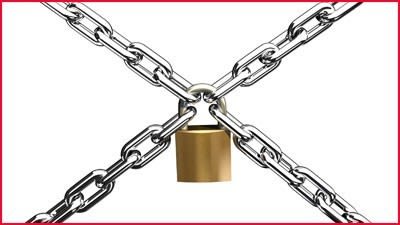Fixed home loan interest rates are attractive, but beware the potential pitfalls and restrictions
The popularity of fixed-rate home loans is on the rise.
Around 22% of borrowers who arranged their loans through a Mortgage Choice broker in November chose a fixed-rate product, compared with a six-month average of 19.5%.
Currently, fixed home loan rates are offered at a significant discount to variable rate home loans.
Mortgage comparison website RateCity.com.au calculates the average three-year fixed rate at 5.54%, compared with a standard variable rate of 6.62% – a difference of 108 basis points.
At these rates, using the example of a $300,000 home loan over 25 years would mean a variable rate borrower would pay $2,048 per month while a fixed-rate borrower would pay $1,710 per month –a difference of $338.
These sorts of numbers may tempt borrowers to consider a fixed-rate home loan, but the fact that nearly 80% of borrowers still choose a variable rate home loan should be cause for caution and careful consideration.
As Mortgage Choice spokesperson Belinda Williamson points out, borrowers must carefully weigh up their options, as fixed rate loans have both “pros and cons”.
“Remember, the interest rate is not the only factor to consider, also compare any initial, recurring and break costs, the ability to make extra repayments and redraw, lender service and how long the loan will take to be approved,” she says.
It is worth stating the obvious benefit and potential shortcoming of a fixed rate home loan – that the interest rate is fixed.
If interest rates rise, fixed-rate borrowers are better off as their mortgage repayments remain unchanged, but if interest rates fall, borrowers receive none of the benefits of a lower interest rate – a situation that was illustrated by the estimated 125,000 borrowers who chose to fix their rate in 2008, just before the RBA began cutting the cash rate in big chunks.
As a result fixed-rate borrowers circa September 2008 were paying annual interest rate of around 8.75% on a three-year fixed loan, while variable borrowers' annual interest rates fell to as low as 5.75% by May 2009, with variable rates remaining below 8% in subsequent years.
The rate you pay, timing and the duration of your fixed-rate home loan are key factors in making a financially astute decision.
While you may be able to secure a three-year fixed-rate home loan as low as 5.13% (the current refinancing fixed rate offered by UBank), borrowers may qualify for a packaged variable home loan with a rate discounts of 70 basis points (as offered by Westpac) negating much of the fixed-rate interest rate saving, while being able to benefit from all the flexibility and features of a variable rate loan.
Conservatively minded borrowers or those who want the ‘insurance’ of knowing their mortgage payments won’t change month-to-month may consider a fixed-rate mortgage a good option, but should bear in mind a number of restrictions that may apply.
Firstly, the government’s ban on mortgage exit fees introduced on July 1 last year, designed to make it easier for borrowers to switch mortgage providers, does not apply to fixed-rate mortgages.
Fees can run into the tens of thousands of dollars.
Lenders determine break fees based on a combination of factors: the interest rate you are locked into compared to the current market interest rate, the length of time that remains on your fixed-rate term and the loan amount you initially borrowed.
Financial products data provider Canstar estimates that the break costs on a $250,000 three-year fixed rate loan that still has two-and-a-half years to run would be around $10,300.
According to RateCity.com.au spokesperson Michelle Hutchison, other restrictions include that about half of fixed home loans don't allow for redraw facility, which is the ability to withdraw extra funds from the home loan that you added to the loan.
“This is compared to the majority (98%) of variable home loans offer redraw facility,” she says.
Another restriction is the ability to make additional repayments.
“While most fixed home loans allow for additional repayments, they usually come with restrictions on how much you can add each year during the fixed period. For instance, comparing all the three-year fixed home loans in RateCity's database, 60% of those that allow additional repayments have a limit averaging $15,000 per year,” says Hutchison.
In addition, there may be restrictions on paying the loan off early, with heavy penalties if you do so.
Borrowers also need to consider what happens when the fixed-rate term expires.
“Many borrowers may not realise that after the fixed period, your home loan reverts to a different variable home loan and it may not be the best variable rate they can receive," says Hutchison.
“It's a good idea to keep track of when your fixed period is coming to an end and use RateCity to compare home loans to make sure you get the best deal for your needs."
Fixed-rate home loans may also not have other features that come with variable rate loans, such an offset account, which reduces the interest rate on your mortgage based on the balance in this account.
Resi Mortgage CEO Lisa Montgomery advises borrowers to always read the fine print on their home loan contracts.
Borrowers can also hedge their bets, by splitting their loan with a portion of their borrowings on a fixed interest rate and another portion on a variable rate.
Splitting loans is popular at times when the direction of interest rates is uncertain.
Some lenders, such as non-bank lender eMoney, offers a lower variable rate if a borrower fixes 25% of their home loan.
